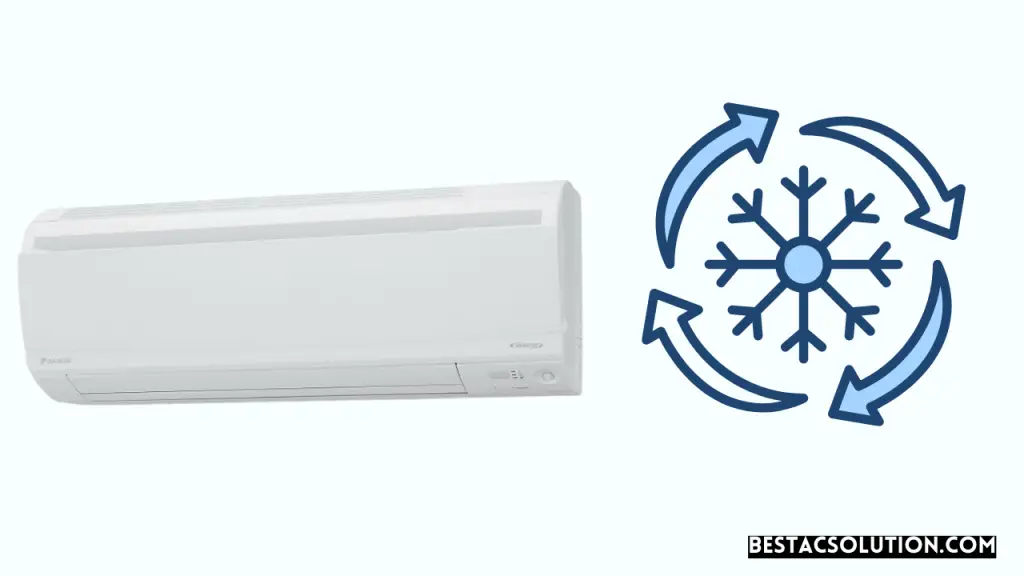If your room is hot even with AC, it could be due to a dirty air filter that is restricting airflow. Check your air filter regularly and replace it when necessary to ensure proper cooling.
Common Causes Of Hot Rooms
If you find that your room is still hot even with the AC running, there could be several reasons behind it. Identifying the common causes can help you effectively address the issue and restore a comfortable temperature. Here are some common culprits that might be contributing to the heat:
One possible reason for a hot room is a bad duct design and installation. If your ductwork is not properly designed or installed, it can result in uneven airflow, causing certain areas of your home to be hotter than others. This can be due to factors such as inadequate duct size, improper sealing, or blocked vents.
An air conditioning unit with a clogged air filter can hinder its ability to provide consistent and even cooling throughout your home. If the air filter in the hotter room is completely dirty, it may be impeding proper airflow, resulting in a hotter room. Monthly filter checks and replacements are crucial for maintaining optimal cooling performance.
Your return air vents play a crucial role in maintaining a comfortable temperature in your home. If one room is consistently hotter than the rest, it’s possible that the return air vents in that room are blocked or damaged. This prevents adequate airflow and leads to temperature imbalances. Checking and ensuring the proper functioning of the return air vents is essential for addressing this issue.
If you are facing the problem of a hot room even with AC, investigate these common causes to determine the underlying issue. By addressing these factors, you can restore a balanced and comfortable temperature in your home.
Bad Duct Design And Installation
Impact on Room Temperature
A bad duct design and installation can have a significant impact on the temperature of a room, even with AC running. The duct system in your home is responsible for delivering cool air from the AC unit to each room. Inadequate duct design or poor installation can result in improper air distribution, leading to certain rooms being hotter than others.
Signs of Bad Duct Design and Installation
To determine if you have a bad duct design or installation, there are a few signs to look out for. These include:
- Uneven cooling: If some rooms in your house are consistently hotter than others, despite the AC running, it may indicate a problem with the duct system.
- Poor airflow: Insufficient airflow from the vents can be a sign of a duct design or installation issue. If you notice weak airflow or inconsistent air distribution, it’s worth investigating the duct system.
- Leaky ducts: Leaks in the ductwork can cause conditioned air to escape before reaching the intended rooms. Look for signs of leaking air, such as whistling or hissing sounds coming from the ducts or noticeable temperature differences near the vents.
- Inadequate insulation: Improperly insulated ducts can result in loss of cooling efficiency and reduced air circulation. If your ducts are not insulated or have insufficient insulation, it can lead to hot rooms.
How to Fix Bad Duct Design and Installation?
If you suspect that your room is hot due to a bad duct design or installation, there are a few steps you can take to address the issue:
- Inspect the ductwork: Hire a professional HVAC technician to inspect the duct system and identify any design or installation flaws. They will be able to determine if repairs or modifications are necessary.
- Seal duct leaks: If there are leaks in the ductwork, sealing them is essential. This can be done using foil tape or mastic sealant to ensure that conditioned air reaches the intended rooms without any loss.
- Improve insulation: If the ducts are inadequately insulated, adding insulation can help prevent heat transfer and maintain cooler air flow. Consider using insulation sleeves or blankets specifically designed for ductwork.
- Consider duct modifications: In some cases, the duct system may require modifications to improve air distribution. This could involve resizing or rerouting ducts to ensure even airflow to all areas of the house.
By addressing bad duct design and installation, you can improve the overall cooling efficiency of your AC system and ensure that each room in your home stays cool and comfortable even during hot weather.
Hvac Unit Dust And Dirt Build-Up

Effect on AC Performance
When the HVAC unit in your room accumulates dust and dirt, it can have a significant impact on the performance of your air conditioning system. The dust and dirt buildup can obstruct the airflow, making it difficult for the AC unit to cool the room effectively. As a result, you may experience an increase in room temperature, even when the AC is running.
Importance of Regular Air Filter Maintenance
Regular air filter maintenance is crucial for ensuring optimal AC performance and preventing rooms from becoming excessively hot. The air filter is responsible for trapping dust, dirt, allergens, and other particles from entering the HVAC system. Over time, the filter can become clogged with debris, reducing the airflow and causing the AC unit to work harder.
By regularly cleaning or replacing the air filter, you can:
- Improve airflow and ventilation
- Enhance the cooling efficiency of your AC unit
- Prevent excessive dust and dirt buildup in the HVAC system
- Reduce energy consumption and lower utility bills
- Extend the lifespan of your air conditioning system
How to Replace an Air Filter
If you notice that your room is significantly hotter than other areas of the house, it is essential to check and replace the air filter in your HVAC unit. Here are the steps to replace an air filter:
- Locate the air filter panel in your HVAC system.
- Turn off the AC unit to prevent any mishaps during the replacement process.
- Open the air filter panel and carefully remove the dirty filter.
- Dispose of the old filter properly.
- Choose a new air filter that matches the size and specifications of your HVAC system.
- Insert the new filter into the filter slot, making sure it fits snugly.
- Close the air filter panel securely.
- Turn on the AC unit and let it run for a few minutes to check if the airflow has improved.
Note: It is recommended to replace your air filter every 1-3 months, depending on usage and the level of dust and pollutants in your environment. Regularly checking and replacing the air filter will help maintain a comfortable and cool room temperature.
Faulty Return Air Vents
Role of Return Air Vents
Return air vents play a crucial role in maintaining a comfortable temperature in your home. These vents are responsible for pulling the air from your room back into the HVAC system for cooling or heating. They create a cycle that ensures the air is continuously recirculated and conditioned. When these vents are functioning properly, the air in your room should be evenly distributed, and the temperature should be consistent throughout the house. However, when there are issues with the return air vents, it can lead to imbalances and one room becoming hotter than the others.
Common Problems with Return Air Vents
There are several common problems that can arise with return air vents, resulting in hot rooms. These issues can include:
1. Blockage: Return air vents can become blocked over time due to dirt, dust, or debris accumulation. This blockage restricts the airflow, making it difficult for your AC system to draw air back in from the room. As a result, the room may not receive sufficient cool air, leading to a hotter environment.
2. Damaged vents: Return air vents can get damaged due to accidental impact, wear and tear, or improper maintenance. Cracks or gaps in the vents can cause air leakage and disrupt the airflow balance in the room. This can lead to temperature inconsistencies where one room remains hotter than the others.
3. Improper vent placement: In some cases, improper vent placement can contribute to hot rooms. If the return air vent is not located in an optimal position, such as being blocked by furniture or placed in an area with limited air circulation, it can prevent the proper functioning of the ventilation system.
Troubleshooting and Fixing Return Air Vent Issues
To address hot rooms caused by faulty return air vents, follow these troubleshooting tips:
1. Check for blockage: Inspect the return air vents to ensure they are free from any obstructions. Clean or replace the air filters to ensure proper airflow. Regularly maintaining and cleaning your vents can prevent blockage and improve air circulation.
2. Repair or replace damaged vents: If you notice any cracks, gaps, or damage to the return air vents, repair or replace them as necessary. This will restore the proper functioning of the ventilation system and help alleviate hot room issues.
3. Consider vent relocation: If you suspect improper vent placement, consider relocating the return air vent to a more suitable location. Consult with a professional HVAC technician to determine the best course of action for optimal air circulation.
By addressing faulty return air vents, you can restore the balance of airflow in your home and alleviate the issue of one room being hotter than the rest. Regular maintenance and prompt repairs are key to ensuring a comfortable and evenly-cooled living environment. Don’t let faulty return air vents ruin your comfort — take action to keep your rooms cool and enjoyable.
Strategies To Cool A Hot Room

Strategies to Cool a Hot Room
Strategic Landscaping for Shade
One effective strategy to cool a hot room is through strategic landscaping for shade. By planting trees and shrubs in specific areas of your property, you can create natural shade and reduce the amount of direct sunlight entering your room. This can significantly lower the temperature and make your room more comfortable.
Using Blackout Curtains
Investing in blackout curtains is another practical way to cool a hot room. These curtains are designed to block out sunlight and prevent heat from entering your room. By keeping your curtains closed during the hottest parts of the day, you can maintain a cooler temperature and create a more pleasant environment.
Shielding Windows from Heat
To further cool your room, it is essential to shield your windows from heat. You can achieve this by using reflective window film, installing exterior shades or blinds, or even applying thermal window panels. These measures help reduce the heat transfer through your windows, allowing your air conditioning system to work more efficiently and effectively.
Utilizing Fans
When it comes to cooling a hot room, fans can be your best friends. Ceiling fans, floor fans, or even desk fans can help circulate the air and create a cooling breeze. By strategically placing fans in your room, you can enhance the airflow, promote evaporation, and significantly lower the room temperature.
Consider Going Ductless
If you continue to struggle with cooling a hot room, it might be worth considering going ductless. Ductless air conditioning systems offer targeted cooling for individual rooms or zones, allowing you to regulate the temperature more efficiently. By eliminating the need for ductwork, ductless systems can provide consistent and effective cooling in your hot room without compromising the comfort of other areas in your home.
Frequently Asked Questions

Why Is My Room So Hot Even With Air Conditioning?
If your room is hot even with air conditioning, it could be due to a dirty air filter. A dirty filter restricts airflow, preventing the AC unit from providing even cooling. Check your filter monthly and replace it when necessary to ensure proper cooling.
How Do You Fix A Room That Is Always Hot?
Is your room always hot even with AC? The problem may be a dirty air filter. Check and replace the filter monthly to ensure proper cooling. You can also strategically plant trees and use blackout curtains to reduce heat. Additionally, make sure your windows are shielded and utilize fans for air circulation.
Another solution is to consider a ductless AC system.
Why Is My Room Hotter Than The Rest Of The House?
A possible reason for your room being hotter than the rest of the house is a dirty air filter in your AC unit. Check and replace the filter regularly to ensure even cooling. Blocked or damaged return air vents can also cause temperature variations in different rooms.
Why Is My Room So Hot Even With Air Conditioning?
An air filter full of dust and dirt can prevent your AC unit from providing even cooling. If the air filter in the hotter room is completely dirty, this could be your problem. Be sure to check your filter monthly so you know when it’s time for a replacement.
Conclusion
If you’re wondering why your room is still hot even with air conditioning, one possible culprit could be a dirty air filter. A clogged filter can hamper proper airflow and prevent your AC unit from cooling effectively. To fix this issue, make sure to check and replace your air filter regularly.
Additionally, strategically using landscaping, investing in blackout curtains, shielding your windows, utilizing fans, or even going ductless could help regulate the temperature in your room. Remember, identifying and addressing the underlying causes is key to creating a cooler and more comfortable living space.


